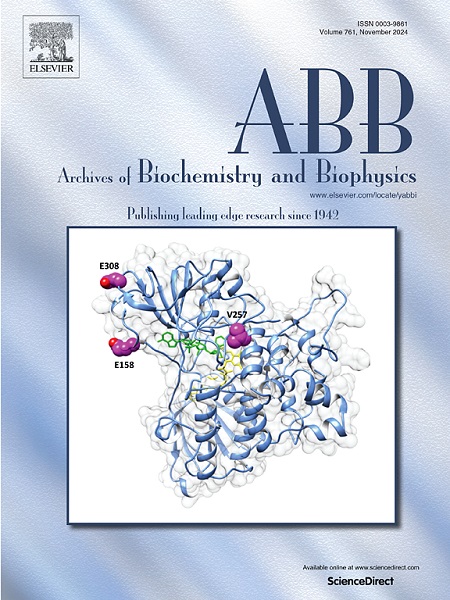在顺铂肾毒性雌性大鼠中,高强度间歇训练通过klotho和Nrf2信号通路改善肾脏氧化还原状态的效果优于连续训练
IF 3.8
3区 生物学
Q2 BIOCHEMISTRY & MOLECULAR BIOLOGY
引用次数: 0
摘要
氧化应激和亚硝化应激是顺铂化疗引起肾毒性的主要机制。运动训练可以通过激活Klotho和Nrf2信号通路来促进抗氧化作用。我们比较了低(LIT)、中等(MIT)和高强度间歇(HIIT)训练方案通过调节klotho和Nrf2信号对cddp诱导的AKI雌性大鼠肾脏氧化还原状态的影响。Wistar大鼠分为5组(n = 7):久坐对照组(C + S);CDDP和久坐(CDDP + S);CDDP和LIT (CDDP + LIT);CDDP和MIT (CDDP + MIT);CDDP和HIIT (CDDP + HIIT)。训练方案在电动跑步机上进行,持续8周。在这段时间后,我们给药CDDP (5 mg/kg), 7天后收集生物样本进行分析。我们的数据表明,CDDP引起了管状结构和吸收功能的改变,降低了klotho的表达,增加了细胞大分子的氧化和亚硝化损伤标志物,如脂质(4-HNE和TBARS)、蛋白质(羰基化和3-NT)和DNA (8-OHDG)。然而,训练方案以强度依赖的方式减少了所有这些变化,HIIT的效果更为突出。我们的训练方案增加了肾脏抗氧化防御(SOD-1,过氧化氢酶和GPx),可能是通过激活Nrf2途径,也是以强度依赖的方式。总之,我们的研究结果表明,与LIT和MIT相比,HIIT促进了更明显的肾保护作用,通过激活cddp诱导的肾毒性雌性大鼠的Klotho和Nrf2信号通路来改善氧化还原状态。本文章由计算机程序翻译,如有差异,请以英文原文为准。
High-intensity interval training elicits superior effects than continuous training to improve renal redox status via klotho and Nrf2 signaling in female rats with cisplatin nephrotoxicity
Oxidative and nitrosative stress are the main mechanisms of nephrotoxicity induced by the chemotherapy cisplatin (CDDP). Exercise training can promote antioxidant effects by activating the Klotho and Nrf2 signaling pathways. We compared the effects of low (LIT), moderate (MIT), and high-intensity interval (HIIT) training protocols on the renal redox status via modulation of klotho and Nrf2 signaling in female rats with CDDP-induced AKI. Wistar rats were divided into five groups (n = 7): sedentary control (C + S); CDDP and sedentary (CDDP + S); CDDP and subjected to LIT (CDDP + LIT); CDDP and subjected to MIT (CDDP + MIT); and CDDP and subjected to HIIT (CDDP + HIIT). The training protocols were carried out on a motorized treadmill lasting 8 weeks. After this period, we administered CDDP (5 mg/kg) and, 7 days later, collected biological samples for analysis. Our data demonstrate that CDDP caused changes to the tubular structure and absorptive function, reduced klotho expression, and increased oxidative and nitrosative damage markers to cellular macromolecules, such as lipids (4-HNE and TBARS), proteins (carbonylation and 3-NT), and DNA (8-OHDG). However, training protocols reduced all of these changes in an intensity-dependent manner, with effects more prominent with HIIT. Our training protocols increased the renal antioxidant defenses (SOD-1, catalase, and GPx), probably through the activation of the Nrf2 pathway, also in an intensity-dependent manner. In conclusion, our results suggest that HIIT promoted more pronounced renoprotective effects than LIT and MIT, improving redox status via activating of the Klotho and Nrf2 signaling pathways in female rats with CDDP-induced nephrotoxicity.
求助全文
通过发布文献求助,成功后即可免费获取论文全文。
去求助
来源期刊

Archives of biochemistry and biophysics
生物-生化与分子生物学
CiteScore
7.40
自引率
0.00%
发文量
245
审稿时长
26 days
期刊介绍:
Archives of Biochemistry and Biophysics publishes quality original articles and reviews in the developing areas of biochemistry and biophysics.
Research Areas Include:
• Enzyme and protein structure, function, regulation. Folding, turnover, and post-translational processing
• Biological oxidations, free radical reactions, redox signaling, oxygenases, P450 reactions
• Signal transduction, receptors, membrane transport, intracellular signals. Cellular and integrated metabolism.
 求助内容:
求助内容: 应助结果提醒方式:
应助结果提醒方式:


